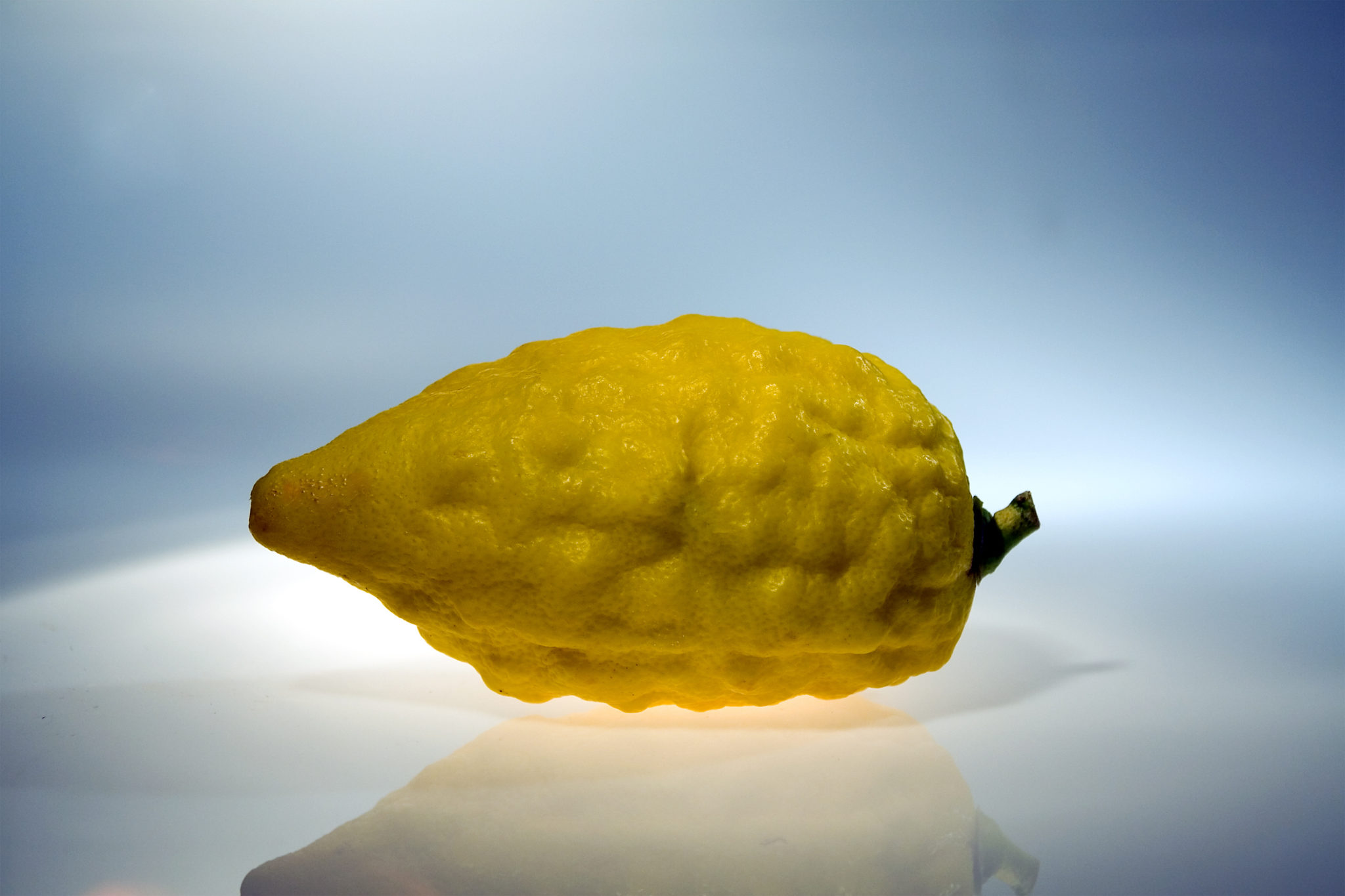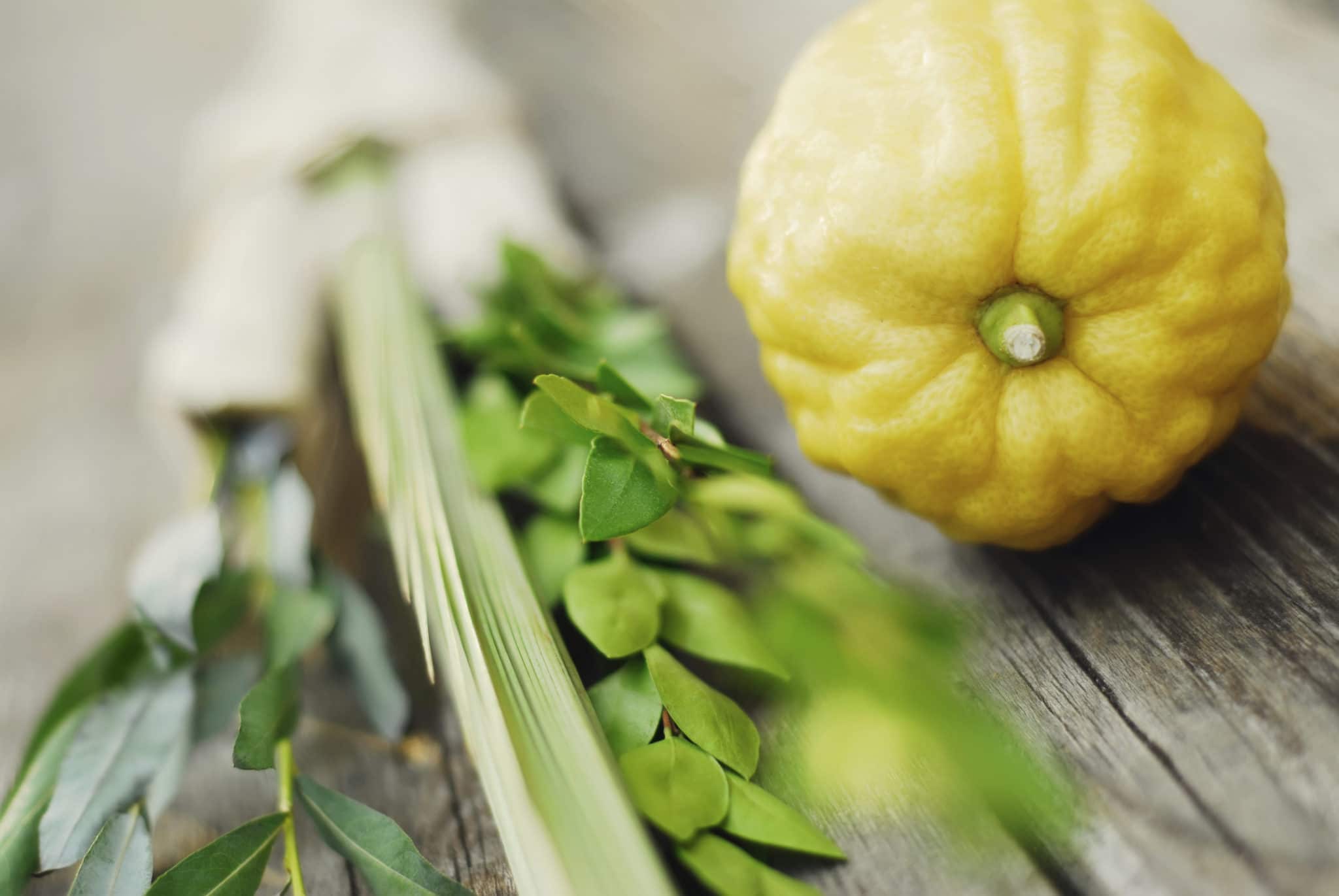When is something yours? When you control it? When you have a legal and moral right to its use? When it is yours alone, to the exclusion of everyone else? “Ownership” may imply many things, depending on the particular circumstances, society and individual identity that define it.
A difference of law between two observances of the festival of Sukkot–dwelling in the sukkah and acquiring the “four species”–is one example of the relativity of “ownership.” Regarding both these mitzvot, the Torah stipulates that the object of the mitzvah must be “yours”; but the definition of “yours” varies from mitzvah to mitzvah.
In the case of the “four species” the Torah states:
“You shall take for yourselves on the first day [of the festival], the fruit of the splendid citron tree, the frond of a date-palm, the thickly leafed sprig of the myrtle, and willows that grow at a brook…” [1]
Our sages explain that the words “You shall take for yourselves…” come to teach us that these must be the absolute property of their user: one who uses a stolen citron (or palm frond or myrtle or willow sprig), or a borrowed citron, or even a citron which he owns in partnership with another person, has not fulfilled the mitzvah of taking the “four species” on the first day of Sukkot.[2]
The verse “you shall make for yourself a festival of sukkot”[3] is likewise interpreted to mean that one’s sukkah must be one’s own. But here the designation “yours” is more broadly defined. In this case, the verse comes only to exclude a stolen sukkah: a borrowed or partially owned sukkah is considered to be sufficiently “yours” to satisfy the mitzvah’s requirements.[4]
To support this definition of ownership, the Talmud cites another of the Torah’s statements regarding the mitzvah of dwelling in the sukkah. In Leviticus 23:42 we read:
“Dwell in sukkot for seven days; all citizens of Israel shall dwell in sukkot.”
In this verse, the word sukkot, which is the plural of sukkah, is spelled without the letter vav. This means that the word can also be read as sukkat, “the sukkah [of],” and the verse understood as saying that “all citizens of Israel shall dwell in the sukkah.” Explains the Talmud: the Torah wishes to imply that the entire nation of Israel may, and ought to, dwell in a single sukkah! Aside from stressing the brotherhood and equality of all Jews, this also has the legal implication that a sukkah need not be exclusively “yours” in order for you to fulfill the mitzvah of dwelling in it. If all Israel may dwell in a single sukkah, then the requirement to make it “for yourself” cannot to be understood in the narrow sense of exclusive ownership, but in the sense of the right to a thing’s use.
Why does the “yours” of the sukkah-dweller differ from “yours” of one engaged in the mitzvah of taking the “four species”? Obviously, there is an intrinsic difference between these two Sukkot precepts, a difference that extends to the very identity and self-definition of their observer.
The Joy of Giving
Sukkot is the festival that celebrates Jewish unity. Unity is the underlying theme of the festival’s three distinctive elements: joy, the “four kinds,” and the sukkah.
Although all the festivals are referred to as “occasions for joy” (moadim l’simcha), only the festival of Sukkot is defined as z’man simchateinu, “The Time of Our Joy” (Passover is subtitled “The Time of our Freedom” and Shavuot, “The Time of the Giving of Our Torah”). Indeed, the Torah stresses the centrality of joy to the festival of Sukkot more than with any other festival.[5]
And joy, for the Jew, is an exercise in empathy and communal concern. “You shall rejoice on your festival,” enjoins the Torah, “you, your son, your daughter, your servant, your maid, the Levite, the stranger, the orphan and the widow…”[6] In the words of Maimonides:
“When one eats and drinks, one must also feed the stranger, the orphan, the widow, and the other unfortunate paupers. One who locks the doors of his courtyard and feasts and drinks with his children and wife but does not feed the poor and the embittered—this is not the joy of mitzvah but the joy of his stomach.”[7]
Selfish festivity is divisive, accentuating the differences between the haves and the have-nots, between the full and empty stomachs of society. But joy of mitzvah, joy as defined by Torah, unites. Master and servant, family man and loner, wealthy man and pauper, are all united by the giving and compassionate joy of the Jewish festival.
Nevertheless, joy cannot be said to effect a “union” in the ultimate sense of the word; at most, it introduces a relationship between disparate individuals. The pauper remains separated from the rich man by a gulf of status and economic station, as does the servant from the master and the stranger from the homesteader. Joyous hearts and giving hands extend across these gulfs, but the division and distance remain.
So to inspire a deeper and truer unity, the Jew acquires the “four species.”
Taste of Knowledge and Scent of Deed
The Midrash [8] explains that the “four species” represent four spiritual classes within the Jewish people. The citron, which has both a delicious taste and a delightful aroma, represents the perfect individual—one who is both knowledgeable in Torah and replete with good deeds. The date palm, which generates taste (dates) but no smell, personifies the learned but deed-deficient individual—the scholar who devotes his life to the pursuit of G-d’s wisdom but shuns the active sphere of Jewish life. The myrtle’s delightful scent and lack of taste describe the active but ignorant Jew. Finally, the tasteless, scentless willow represents the Jew who lacks all outward expression of his Jewishness.
On Sukkot, the palm frond, myrtle, willow and citron are bound and joined together,[9] reiterating the underlying oneness of a topically diverse people. Whatever may divide the scholarly from the ignorant and the more observant from the less so, Sukkot is a time when all are held together in the single hand of Jewish identity.
So while the joy of Sukkot introduces a harmonizing give-and-take relationship between various segments of the community of Israel, the “four species” takes this unity a step further, integrating them into a single entity. By taking the “four species” in hand we reiterate that, despite our disparities, we are all one.
Self and Selves
Despite our disparities, we are all one. For disparities there are aplenty, as even the unifying “four species” express.
The palm frond towers above the lot in scholarship and erudition. The myrtle exudes its scent of good works, while the willow is marked by its obvious ignorance and fruitlessness. The citron, of course, outshines them all with its sublime perfection. Even as they symbolize the unity of the various segment of Israel, the “four species” underscore the differences between them—indeed, they stress these very differences as the complementary components of a one people.
There is, however, yet a higher form of unity that is realized by the festival of Sukkot: the unity of the sukkah. The unity embodied in a structure worthy of accommodating an entire nation within its walls.
“The entire nation of Israel may, and ought to, dwell in a single sukkah.”
For the sukkah represents a oneness so deep and all-embracing that all distinctions pale to insignificance before it.
“Sukkah is the only mitzvah that a person enters into with his muddy boots,” goes the chassidic saying, and this expresses the very essence of the sukkah. When a person enters a sukkah, its walls and covering encompass him entirely, and equally encompass his entirety. His mind is no more and no less in the sukkah than his toes; his heart is simply another occupant of its space, as are his “muddy boots.” So when the entire nation of Israel dwells in a single sukkah, the unity expressed is one that transcends all differences and distinctions between them.
This is not the unity that is created by our love and compassion for each other. Nor is it the deeper unity that stems from the way in which our individual roles, talents and strengths complement and fulfill one another, forming the organs and limbs of a single, integrated body. The sukkah brings to light the oneness implicit in our very beings, the simple and absolute oneness of a people rooted in the utterly singular oneness of their creator and source.
This explains the different ways in which our sages interpret the “for yourself” that the Torah requires for the “four species” and for the sukkah. The Jew taking the “four species” is uniting with his fellows in a manner which preserves–indeed, employs–his identity as an individual. Thus the Torah’s use of the word lachem, “for yourselves” (in the plural): in addressing the people of Israel regarding the “four species,” the Torah is speaking to many individuals, each with his/her own unique contribution to the communal whole. In this context, “yours” is something that is unique to your individual self; a borrowed or jointly owned object is not “yours.”
Regarding the making of a sukkah, however, the Torah addresses us in the singular lach (“for yourself”). For the mitzvah of sukkah touches on the intrinsic unity of Israel, a unity in which we are all seamlessly one. Here “for yourself” is the single, communal self of Israel; as long as your use of a sukkah does not violate the integrity of this unity (as does the use of a stolen sukkah), the sukkah of your “fellow” is no less yours than your own.
Adapted from the teachings of the Rebbe by Yanki Tauber.
[1] Leviticus 23:40.
[2] Talmud, Sukkah 41b; Mishneh Torah, Laws of Lulav, 8:10-11 (see Maggid Mishneh on section 11); Shulchan Aruch, Orach Chaim, 649 and 658. Thus, if a person wishes to accord his fellow the opportunity of observing the mitzvah of taking the “four species” with his set, he must give it to his fellow as a gift, and have his fellow give it back to him as a gift after observing the mitzvah. (All this applies only to the first day of Sukkot, when the mitzvah of taking the “four species” is mide’oraita (a biblical precept).
[3] Deuteronomy 16:13.
[4] Talmud, Sukkah 27b (as per the majority opinion, whose ruling we follow in practice); Mishneh Torah, Laws of Sukkah, 5:25; Shulchan Aruch, Orach Chaim, 637 (see especially the words of Shulchan Aruch HaRav, ibid., section 2).
[5] See Mishneh Torah, Laws of Lulav, 8:12.
[6] Deuteronomy 16:14.
[7] Mishneh Torah, Laws of the Festivals 6:18.
[8] Midrash Rabba, Vayikrah 30:12.
[9] The palm frond, myrtle and willow twigs are actually tied together in single bundle. But also the perfect tzaddik, personified by the citron, bridges his natural distance from the rest during the actual observance of the mitzvah, when all four species are held and pressed together.







